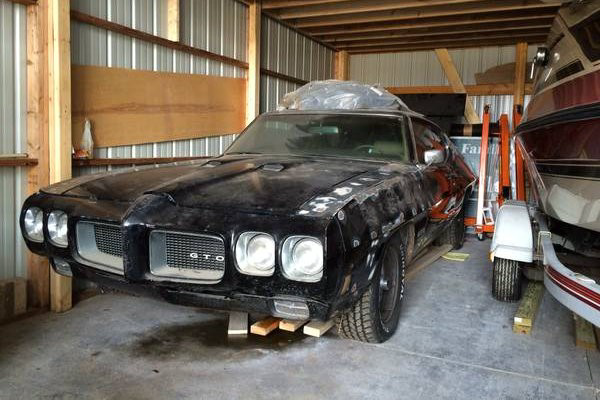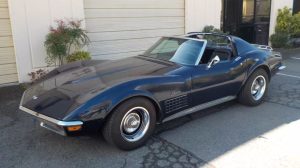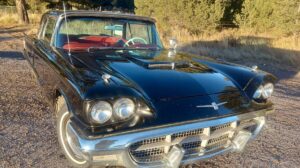
The seller of this GTO didn’t provide much information, but they claim it is a 455 H.O. car. The 455 H.O. was the biggest engine offered in the GTO for 1970, but wasn’t actually the most powerful option. Seeing as this is an H.O. (High Output) you would think it would be the most powerful, but it was rated at just 360 horses or 10 hp lower than the top Ram Air 400. While horsepower was lower it was rated at an impressive 500 pounds of torque, so it still is a monster of a motor. The seller claims the car needs a restoration, as there is rust. With an asking price of $14k a few more photos and information would be nice. They do provide the build sheet, which you can see here on craigslist in Green Bay, Wisconsin, and could reveal more about the options. Special thanks to Cooper S for this tip!











Need more pictures. Looks like he wants to dump it for some reason since the trades he is looking for might not be a desirable.
Looking at the cost of options on the build sheet makes me wonder how the pricing was determined. The HO 455 option ($57) is less than the Cordova top ($100). The ability to mix and match so many different combinations is a long way from the packaged options we get today.
Don,
Adding the vinyl top to the steel roof cost $100.00 while difference between the standard GTO engine vs. the 455 cu.in. was only $57.00. The engine cost a lot more than that but it was included in the cost of the car.
I had one of these when it was only 4 years old. One of the best driving cars I ever had. I once went 12 miles on Ohio SR 52 in southern Ohio without ever touching the steering wheel. Too bad I was too young to realize what a 1970 GTO Judge would be worth 40 years later.
Its on my list of cars I’d love to have back.
Now that is a car to have!!!
All 1970 GTOs with factory 455 option had the stronger Chevy 12 bolt rear end vs. Pontiac 10 bolt used with all other engines. Chevy 12 bolt uses C-clip axle retention. Pontiac used 4-bolt cover over pressed on wheel bearing (near wheel) to retain axle.
This would be a quick way to verify it was originally a 455 car. Very few people would bother to change the axle to fake a 455 car. Turbo 400 trans goes well with the 455HO.
I bought a virtually identical car new just about the same time. White but no vinyl top. I really liked the car…but not $14000 worth (to me) for one needing restoring.
My favorite year! Being a hot rodder I would rather have a ram air iv 4speed car. Make mine orbit orange judge no vynil top! Lol. As for this car. Would make a nice cruise night or road trip car redone. Plenty of power, auto power steering and brakes. Make a nice driver that isnt as common as some other years. See way more 66 and 69 imho. Shame the seller doesnt include more pix. Might actually be worth the money.
I remember when the car was first released (yes, I’m that old) it didn’t make any sense as to having 10 HP less between the two engines. Those in the know supposedly later confirmed that it really didn’t make sense because it WASN’T true. The larger displacement engine put out somewhere around 450HP but the corporate brass wouldn’t allow that to be advertised as they were already taking too much heat from the insurance industry and the car wouldn’t be insurable if they published that number. Why else would they beef up the rear end? Forty years later it’s probably fairly tired out but think of the potential!
Unfortunately this is not the case. Until 1968 I was an engineer at Pontiac. 1970 was the last year for “gross” horsepower readings. These were obtained with step tests on an engine dyno with open exhaust, no cooling fan, and with fuel and spark adjusted for highest output at each rpm. Also, there was no federal regs to control what hp and torque could be advertised as there are today. In many cases the numbers were “optimistic”, and in some rare cases understated.
The ’70 455 HO made great lowend torque, mostly due to it’s dispacement, but nowhere near 450 hp. 360 was probably overstating it. It is torque, especially when multiplied by a 2.48 first gear multiplied again by the torque converter, that stresses the final drive (rear end). The Pontiac A-body 10 bolt was marginal in durability with the 455, and the big car (Catalina, Bonneville) axle would not fit. Easy, cheap fix was Chevy 12 bolt with its larger ring and pinion.
Car magazines, marketing folks and urban legends tend to embelish the truth, and it gets “better” with age.
Makes absolute sense to me! Thank you for the info!
$14,000? Nope. Love these cars. Hate being broke.
Keep in mind that the ’70 455 HO and the ’71-’72 455 HO are very different beasts. The ’70 is basically the full size Pontiac and station wagon engine, D-port heads, a cruiser motor. The ’71-’72 round port 455 HO was essentially a stroked(and slightly bored) 400 Ram Air IV motor, but without the IV’s stouter bottom end. One day I hope to find my brother’s old ’71 GTO hardtop and build it up with a 455 HO/4sp. His car was just a standard 400/auto car, blue/blue with dealer blue vinyl top. Last saw it in Sept. ’87 when he sold it here in the Philly suburbs. Wish I knew the VIN. Hopefully it will pop up some day.
Looks like Big Chiefs Crow on Street Outlaws.